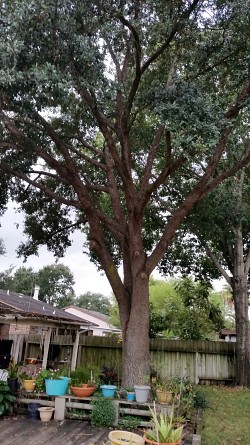9 Native Flowers Often Mistaken for Weeds
 To the untrained eye, many wild plants may look like weeds. These can vary from asters and goldenrods in Maine, to butterfly weed in Georgia. However, in the garden these same plants (mostly native perennials) are great performers that, with a minimum of care, will reward you for years to come.
To the untrained eye, many wild plants may look like weeds. These can vary from asters and goldenrods in Maine, to butterfly weed in Georgia. However, in the garden these same plants (mostly native perennials) are great performers that, with a minimum of care, will reward you for years to come.
There is a wealth of "weeds" (including improved selections) for every season that grow happily in the wild or in a cultivated landscape. Some are dainty and diminutive like the blue-eyed grass, Sisyrinchium species (it only grows 4 to 12” tall), and others are big and bold like giant Joe-Pye weed (Eupatorium purpureum), which grows up to 9’ tall with flower heads that are 1’ long and 6” across.
If you decide to include some choice native perennials or grasses in your garden, make sure to purchase them from a nursery or mail order catalog rather than digging them up from the wild -- or hire a landscaper to select and plant the species of your choice. Local native plant societies usually list sources or offer plants for sale. They also have lists of exotic weeds that are considered invasive and should not be planted in your garden, including kudzu and Rosa multiflora.
9 Native Flowers that are Worthy of Your Garden
1. Asclepias tuberose: "Butterfly weed" comes in many shades of red, orange and yellow. This beauty flowers in summer and is a butterfly magnet. It is known to be difficult to transplant because of its deep taproot. Zone 3-9.
2. Aster species: Daisy-like flowers come in many colors including white, purple and red. Asters bloom in summer and fall and vary in height from 12 inches to 6' tall. Zone 4-8.
3. Eupatorium maculatum: This selection of Joe-Pye weed, known as "Little Joe," grows to 4' tall and blooms in summer. Plant it in full sun or part shade. Zone 4-8.
4. Eupatorium rugosum: "White snakeroot" has white blooms in late summer. Zone 4-8.
5. Helianthus species: These annual sunflowers with yellow, purplish brown or red flowers grow to 4 – 8'. Site in full sun. Blooms summer through fall. Zone 8-10.
6. Oenothera species: Evening primrose types have flowers that open during the day and close at night. Sundrop types have flowers that open toward the end of the day and close the following morning. Flowers are yellow, pink or white. Some are fragrant, 6” to 3’ tall, spreading. They like full sun and dry soils. Zone 4-10 depending on the species.
7. Pycnanthemum species: "Mountain mint" has leaves that look almost as if they have been dusted with powdered sugar. This fragrant beauty provides both nectar and pollen for butterflies and other pollinators. As a group they range in size and will grow in full sun or light shade. Zone 3-9.
8. Vernonia noveboracensis: "Ironweed" grows to 4 – 7' tall and has purple flowers in late summer. It prefers a moist soil and full sun; attracts butterflies. Zone 5-8.
9. Tradescantia virginiana: "Virginia spiderwort" grows 1 – 3' tall with purple, white or blue flowers. This is great for a shady area or sun. Cutting off seed heads will prevent plants from spreading aggressively. Blooms from early spring through June. Let it ramble and scramble in your mixed border. Zone 4-9.
Horticulturist Erica Glasener writes for networx.com.
Updated July 26, 2018.
Looking for a Pro? Call us (866) 441-6648

Landscaping Average Costs
Landscapers Experiences

“Stealth” Tree Trimming Was An Incredibly Clean Job

Leaf Removal This Year, More Landscape Work Next Summer



